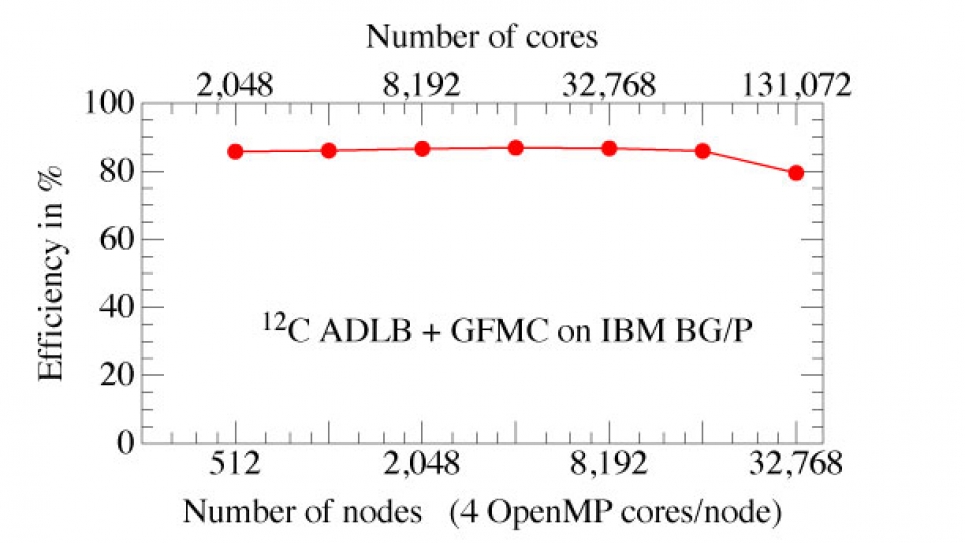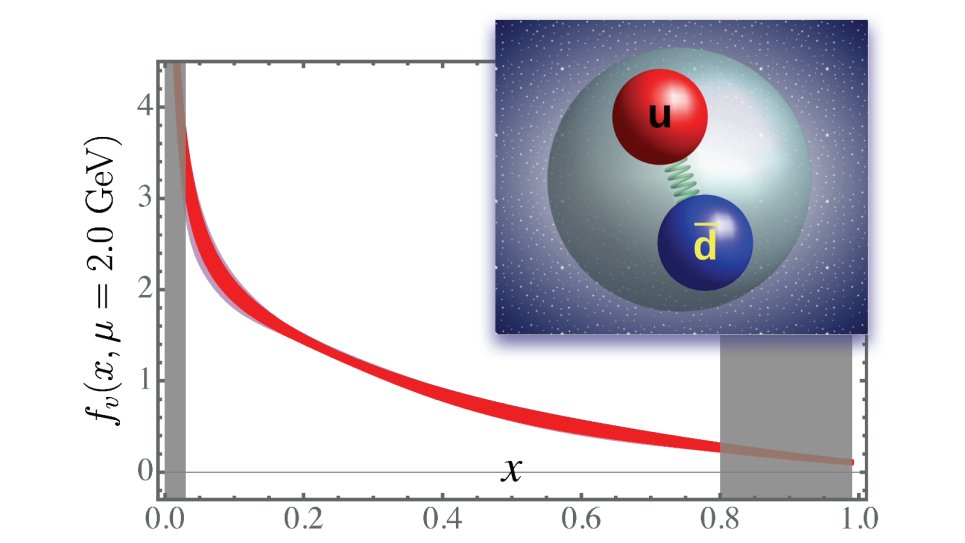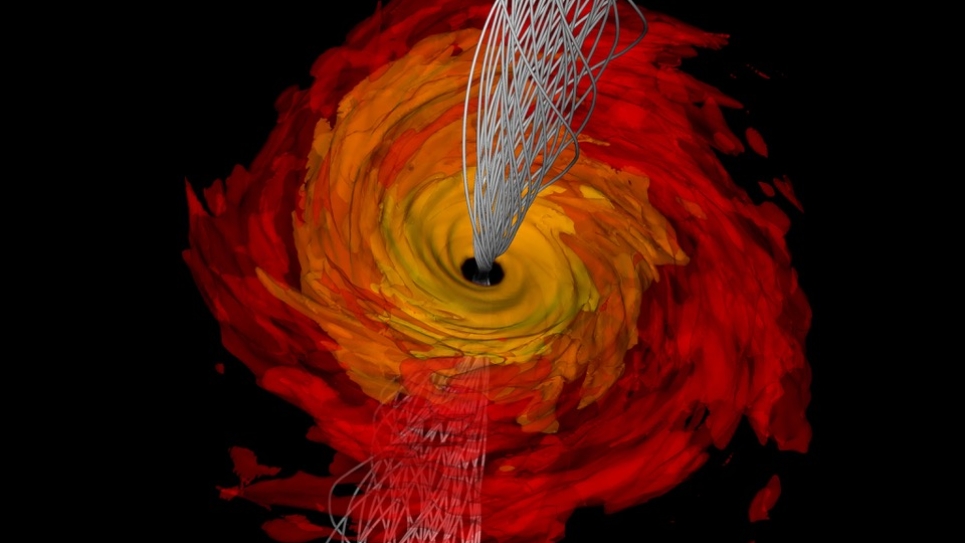
Nuclear structure and nuclear reactions
Researchers from Iowa State University and Oak Ridge and Argonne National Laboratories are using complementary techniques, including Green’s Function Monte Carlo, the No Core Shell Model, and Coupled-Cluster methods to perform ab initio calculations of both structural and reaction properties of light- and medium-mass nuclei. The calculations use realistic models of nuclear interactions including both two- and three-nucleon forces. Their work could advance understanding of the triple-alpha burning reaction, which is essential to life on earth.
They also are exploring the role of the three-nucleon force in substantially heavier nuclei. Furthermore, researchers are using Density Functional Theory (DFT) to calculate properties of nuclei across the entire range of nuclear masses. These DFT studies will help predict nuclear properties relevant to nuclear reactions such as neutron-nucleus reaction cross-sections and fission. This new understanding of nuclei has far-reaching implications, impacting the fields of energy and astrophysics. The researchers are conducting their calculations on the IBM Blue Gene/P (BG/P) at the Argonne Leadership Computing Facility and the Cray XT at Oak Ridge National Laboratory.
The BG/P research team has completed ground-state 12C calculations—a key milestone. The ground state represents the best converged ab initio calculations of 12C ever. The researchers have continued developing and testing various formulations of starting wave functions for the first excited 0+ state of 12C (the Hoyle or triple-alpha burning state). They are still trying to find a starting wave function that remains orthogonal to the ground state wave function during Green's function Monte Carlo (GFMC) propagation.
The BG/P team has used the 12C GFMC calculations to develop the Automatic Dynamic Load Balancing (ADLB) library, a general purpose work-sharing library. By using OpenMP on each node, the team is now getting essentially perfect scaling up to 65,536 cores (32,768 are used for their production runs). The team will be testing a new multi-threaded version of ADLB on Argonne's BG/Q when that machine is available.


